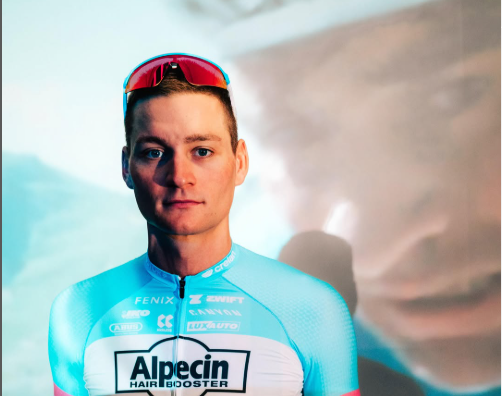The stated weight of 75 kg for Mathieu van der Poel shows an incredibly accurate ratio of strength to endurance. His height of 1.84 meters makes him neither as heavy as an explosive track sprinter nor as light as a pure climber, yet he combines traits of both. In categories like cyclo-cross, road, mountain bike, and gravel where versatility is just as crucial as natural skill, this balance has made him exceptionally successful.
Van der Poel has demonstrated how weight in cycling may be seen as a foundation rather than an obsession. His weight is neither excessively bulked up or stripped to the bone; rather, it is especially advantageous for terrains that require strength and tenacity. His bulk provides him with power and traction on cobblestones, where force is needed. His very slender physique guarantees that he can accelerate where others are unable to on steep classics.
Bio Data – Mathieu van der Poel
| Name | Mathieu van der Poel |
|---|---|
| Nickname | MVDP – The Flying Dutchman |
| Born | 19 January 1995 (Age 30) |
| Birthplace | Kapellen, Belgium |
| Height | 1.84 m (6 ft ½ in) |
| Weight | 75 kg (165 lb; 11 st 11 lb) |
| Disciplines | Cyclo-cross, Road, Mountain biking, Gravel |
| Current Team | Alpecin–Deceuninck |
| Rider Type | Puncheur, Classics Specialist, Cross-country |
| Major Titles | 7x Cyclo-cross World Champion, 1x Road World Champion, 1x Gravel World Champion |
| Reference |
The 2023 Road World Championships offered a particularly lucid example. After racing for hours in the exhausting conditions of Glasgow, he launched a decisive attack in the rain and rode away from rivals with incredible ease. He used his weight as a lever to propel himself into a rainbow jersey rather than as a constraint. His muscular balance immediately stood out to both fans and commentators.
The subtleties are brought to light by comparisons with his opponent, Wout van Aert. Van Aert, who is a little heavier, does exceptionally well in time trials and prolonged grinding. Van der Poel, who is quite comparable in size but has a leaner composition, does best in situations that call for quick reflexes and powerful outbursts. Their competition has been greatly enhanced by this contrast, making it one of the most interesting plots in contemporary cycling. Each stands for a distinct strategy for controlling the connection between performance, weight, and height.
His roles in the monuments demonstrate how much his art has advanced in the last several years. Van der Poel has won both Paris-Roubaix and Milan-San Remo on numerous occasions, despite the fact that they demand completely different physiological strengths. Milan–San Remo requires a softer touch on the last climbs and a precisely timed sprint, while the cobbles require an exceptionally robust frame that can endure devastating vibrations. He can move rather effectively between these extremes because to his 75 kg weight.
His identity as a well-tuned athlete is also reflected in endorsements. Sporting a high-end Richard Mille timepiece valued at over $300,000, he focused on the importance of style in addition to his triumphs. However, he replied to criticism of his association with a private aircraft company by defending the needs of elite competition and acknowledging environmental issues in a very explicit manner. These events demonstrate how his off-bike decisions reflect the meticulous balance that characterizes his athletic physique.
His reputation as one of the sport’s most complete cyclists is supported by UCI data. He is in the top tier in several categories with an average strength score of 96. He scores 99 on cobbles, making him virtually unmatched. He scores 94 on difficult terrains, demonstrating his dominance where others falter. Even though he is not a sprinter by trade, his score of 87 places him among the best. These figures demonstrate his remarkable versatility in terms of body composition.
In cycling, weight has symbolic significance that extends beyond performance. The sport’s culture has pushed riders to dangerously low body masses for decades, often at the expense of their health. That story is called into question by Van der Poel’s method. His success has emerged as a particularly creative illustration of how sportsmen may thrive without giving in to dangerous extremes, as he values strength just as much as leanness. His presence aims to change ideas about what a cyclist’s body should look like in addition to winning.
His ability to bounce back from injury further demonstrated how his body can withstand extreme strain. His comeback from failures was a declaration of confidence as well as a return to competitiveness. His reputation as an athlete whose weight and conditioning provide him lasting power in the toughest environments was further cemented when he returned to full strength much faster than many had anticipated.
His dominance has developed into something that seems to represent the new era of cycling in recent days. He is a rider of the cobbles, the classics, the cyclo-cross tracks, and the gravel trails; he is not limited to any one discipline or terrain. Through planned preparation, clever alliances, and a well-tuned 75-kilogram physique, he proves that excellence is about balancing power and adaptability rather than just specialty.

